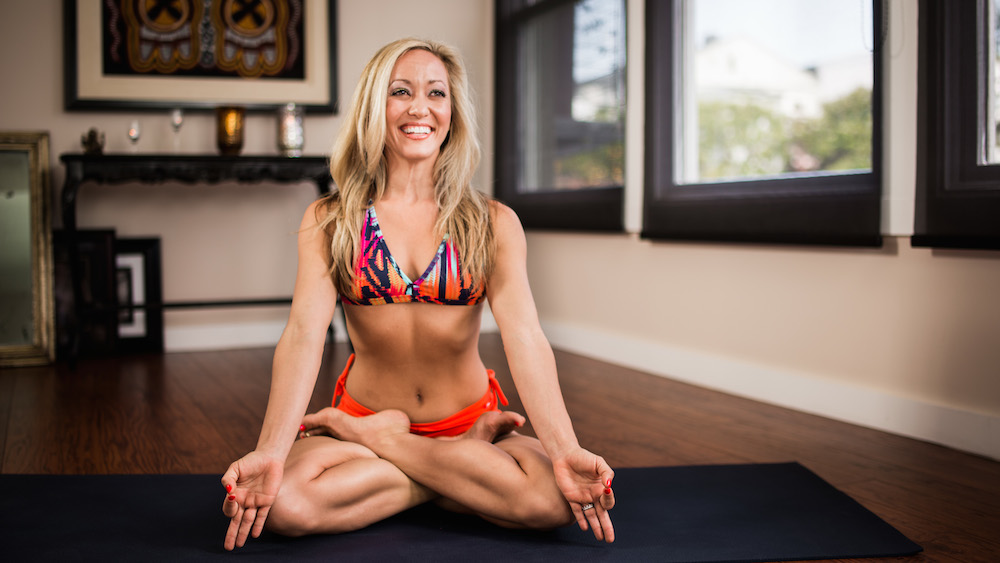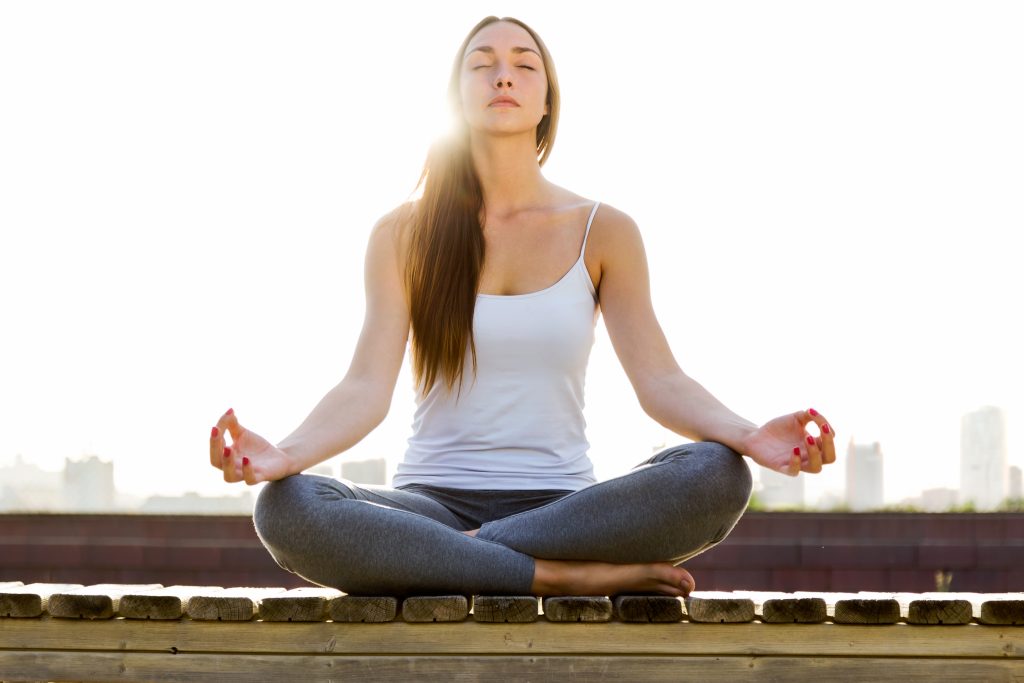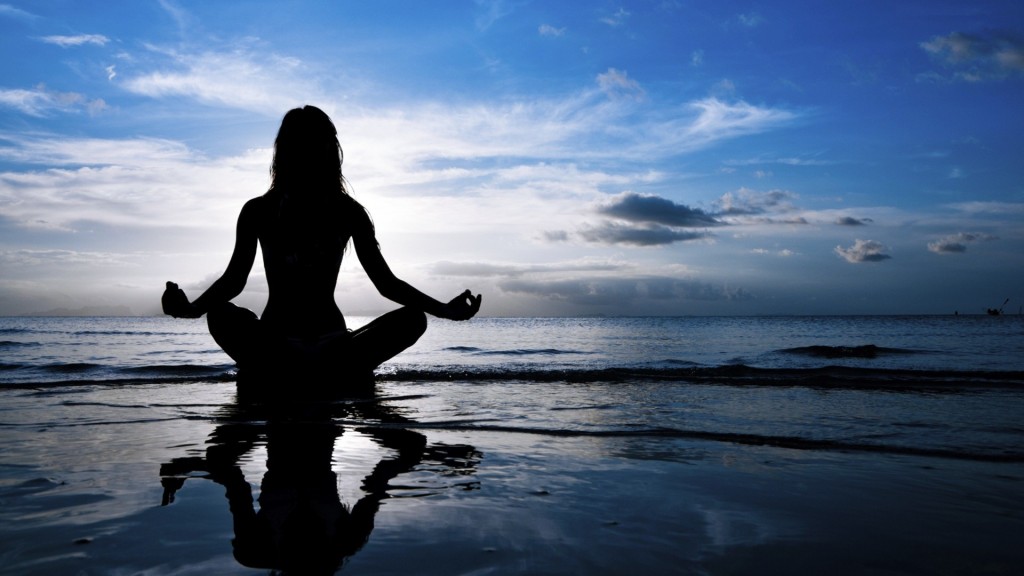
Ashtanga Yoga means to purify the mindthrough eight (Asht) steps, which is basically prescribed by all schools and branches of yoga. Each step in Ashtanga Yoga has to be mastered before mastering the next can be successfully attempted:
The five yamas (Ethical and moral restraints)
Ahimsa: non-violence and non-harming in any form to any living creature. This creates compassionate living, as true non-violence is a state of mind, word and action. This is considered to be the highest law of morality.
- Asteya: non-stealing, to free ourselves from possessiveness and envy.
- Brahmacharya: abstinence and the practice of moderation in all things.
- Aparigraha: non-greed in order to simplify life by adopting an attitude of generosity and non-hoarding.
The five niyamas (Practices to create inner integrity)
- Saucha: purity and cleanliness of mind, body, heart and environment.
- Santosha: cultivation of inner contentment, in order not to hold others responsible for our happiness.
- Tapas: to glow and be illuminated with an inner aim and direction in life for growth. The great yogi lyengar suggests that a “life without tapas is like a heart without love.”
- Svadhyaya: study, not only of an intellectual kind but also of oneself, to develop self-understanding of our inner nature.
- Isvara-pranidhana: realization, devotion and dedication to the divine presence within all life.
Asanas (Postures)

Asana means “seat” and refers to the art of body postures that have evolved over many centuries. Apart from cultivating kanti (physical beauty) due to the enhanced panic flow (life energy) through the body, asanas remove fickleness of mind to restore mental and physical health, strength, wellbeing and vitality. Asana practice also reflects the tendencies, strengths, weaknesses and actions in our life.
Pranayama (Breath regulation)
Prana is the vital life energy within the breath, and so it can also be translated as “the breath of life”. Ayama means “expansion” or “to stretch”, and therefore pranayama is the practice whereby life energy is expanded through the regulation and control of the breath. The natural sound of the breath, shoham (soh-hum), in Sanskrit means “I am that beyond the limitations of body and mind” and resonates unconsciously through the body like a mantra (sacred sound) with each breath taken. In yoga it is believed that by listening into our breath we also become aware of this quiet blessing.
Pratyahara (Sensory withdrawal)

The ancient scriptures suggest that the entire cosmos is situated within the human body, and therefore it is understood that the source of happiness lies within each stimulation, we are able to connect to this inner well of contentment, rather than relying on outward sensory stimulus and grasping in order to fulfill our unquenchable desires. The process of introspection and pratyahara, which certain asanas, such as Kurmasana (tortoise posture), induce, also leads to self-understanding and acceptance.
Dharana (Concentration)
The practice of dharana, or concentration, can take many forms. Methods include being completely attentive to the flow of the breath in harmony with the movement of the body, or focusing on the glow of a candle flame, watching its movements and sharing its light. Whatever technique is used, the aim is the same – to strengthen the mind and gather psychic energies in order to move into a meditative state.
Dhyana (Meditation)
Through the practice of one-directional flow of the mind, ekatanata, or concentration, meditation will begin to follow naturally if time is given to it. Meditation is absolute, it is where we can go beyond time, space, conditions and limitations, allowing our individual core of consciousness to expand and connect with the infinite universal consciousness. The ancient sages described meditation as yoking with nature, as they conceived the infinite universe to be part of the nature of life, death and beyond.
Samadhi (Enlightenment, bliss state of oneness)

This is the ultimate yoga, and it is the culmination of the previous seven limbs. Samadhi transcends meditation: it is without seed, as it goes beyond beginning and end; it is a state of absolute liberation and bliss in which nothing is needed, desired or required as the self has merged all.
To truly practice Astanga yoga we need to endeavour to incorporate all eight limbs: to practice the physical aspects, which are the asanas and pranayama, and to strive to live the actions of yoga, yama, niyama, pratyahara, dharana and dhyana. By reading and discussing, the concepts of yoga may be intellectually understood, but that understanding needs to be put into practice if we wish to experience the richness of its benefits and bring meaning into our lives. As Sri K. Pattabhi jois expounds, yoga is 99 percent practice and 1 percent theory. This requires practice of all the eight limbs of yoga, not just the asanas.
So, what changes can you expect? Lightness. Strength. Fluidity. Better concentration. A calmer and more compassionate outlook. Less fat. A flat stomach. Greater flexibility. The list goes on, and better still, once you have learnt the basic moves from a good teacher astanga yoga is completely free.